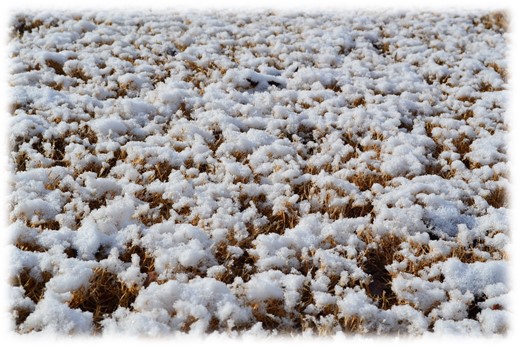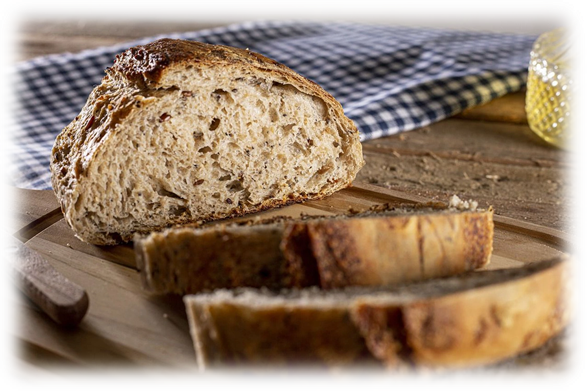Bread
By nourishing us it allows us to live, in breaking it we express a sign of friendship, and it is a sign of unity.
It’s good to realise what the meaning of these signs are, so as to understand the Eucharist better.
Why bread? Why does Jesus during the Eucharist appear as bread? It’s difficult to reply to this question other than to state “because He wanted to”. However, it’s still worth looking at the symbolism of bread in this context. Because, that God, Jesus, becomes Bread for us, is an important sign for us.
Bread is not the food of nomads or gatherers. It is the bread of settled people. Farmers and the populations of cities who can stock up on the farmers’ flour or grain. In itinerant communities who move from place to place, and especially those gaining their food as hunter-gatherers, it’s much more difficult to make use of bread. Is this irrelevant? Not necessarily. Bread as food appears as the sign of a form of stability, a certain type of peace. These two reinforce each other; it’s obvious that farming requires peace. As troops march, as battles rage, crops are destroyed. And then a shortage of bread can quickly develop.
These perceptions of the role “bread” plays can also be found in the pages of the Bible. It is the most basic foodstuff. However, it is not the food of the poor. Sometimes there may be a shortage of bread for them. However, it is also not the food of the rich. They have other delicacies. On the pages of the Bible, “to eat bread” often means having enough to not be poor, to have what is most important, but without knowing luxury. And so, especially in connection with the cultivation of the land, it is a sign of peace and of an absence of serious concerns.

It’s appropriate to remind ourselves of the manna the Israelites ate during the exodus from Egypt. “I will rain bread from heaven” (Ex 16), because the grain, which was used to make flour and then bread (flatbreads, pancakes) were gathered from crops, but was found in the wilderness after the morning dew lifted. It wasn’t a gourmet food. Israel later complained that “For there is no food and no water, and we loathe this worthless food” (Num 21), though as it was, it allowed them to survive
Similarly, it’s worth recalling the story of Elijah and the widow of Zarephath during a famine; the widow decided to feed Elijah first and, then waiting for the promised miracle, she was not disappointed. There was no lack of flour in the jug nor of oil in the barrel. It can’t be said that thanks to Elijah that the widow and her son now knew how feast, but they could survive. And, of course, Jesus feeding the crowds by multiplying bread cannot be neglected. Without going into the theology of these events, even so they were not fed by Jesus with something unknown, but it was enough for them.
It is also in this spirit – a simple food, but sufficient for a peaceful life – that the bread of the Lord’s Prayer can be read. Asking for daily bread, we are asking for everything necessary for life. Not for unknown rarities; for the possibility of maintaining a modest, but still a state of relative safety; for a quiet everyday life.
Now, in this context it’s appropriate to take a look at the significance of the sign which is the bread used in the Eucharist. It is significant that God chose to enter into the form of Bread: so simple, ordinary, without any extravagance. However, allowing real life instead of vegetating. Yes, this Bread, the Eucharistic Bread, allows us to live in true peace and without fear of the future. And thanks to it: strength in our Christian life, our way to the house of the Father. Without it . . . . Well, there would be no “life in abundance” (as St. John calls living in grace, close to God), there would be no resurrection and eternal life. This is the basic meaning of the sign of the Eucharistic Bread, to which bible texts refer (e.g., the Eucharistic discourse in John) and the liturgy refers.
It is also worth remembering the expression of the gesture . . . or rather maybe even a certain factor, that is the sharing of bread with others. When it’s with the poor . . . it’s a gesture of kindness toward them. But you can also share bread with those who are in some way close to you. Then it’s more a sign of friendship. And in this context, it is worth mentioning once more the multiplication of bread by Jesus: He took pity on those in need, but perhaps also in some way showed that they are close to Him. This is especially important in the Gospel of Mark because he gives two accounts the multiplication of bread: one for the Jews, and the other – pay attention – for the gentiles. The second time is an indication that the gentiles were not strangers for Jesus . . .
So, at this moment we should head in the direction of the symbolic feast together – that the symbolism is richer and by no means only relates to bread, yet we must stick to the topic. However, we must apply this to the Eucharist. So, God not only feeds us, but it is also an expression of His friendship.
There is something else in the sign of bread. Saint Paul pointed to it in chapter ten of his first letter to the Corinthians. “The bread which we break, is it not a participation in the body of Christ? Because there is one bread, we who are many are one body, for we all partake of the one bread”. It’s about the second sentence. It is more clearly expressed in the Didache “As this broken bread was scattered upon the mountains, but was brought together and became one, so let thy Church be gathered together from the ends of the earth into thy kingdom” (Didache 9).
A brilliant idea, right? It takes many grains to make one loaf of bread. Bread a sign of creating one from many; it is a sign of unity. This has special meaning when it comes to the Eucharistic Bread; the Body of Christ. We call it Communion (Latin: communion, community). Its reception is, of course, a union with God. But is also at the same time the unity of the people with each other in Christ. So, we are one in Christ.
In this context it is exceptionally painful for awareness of this symbolism is any attempt to divide believers on the basis they receive Communion. Standing (in procession) or kneeling, in the hand or straight onto the tongue . . . . That we receive in different ways, in itself, is an unsettling signal. Especially when the priest asks for the manner of reception to be in one way or another. This is a complete failure because then there is a division into better and worse according to how Communion is received. Whether wanted or not, this gesture in which unity should be most pronounced, the Body of Christ, which is the Church, can be tear it apart . . .
Bread as the symbol that makes life possible, and is shared – is a sign showing friendship, and in itself also a reminder of the unity of those who consume it together. The Eucharist expressed in the sign of bread is a subject especially related to Christian belief which cannot be ignored.
